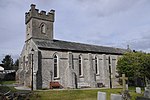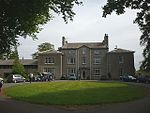St Mary's Church, Yealand Conyers
1852 establishments in England19th-century Roman Catholic church buildings in the United KingdomChurches in the City of LancasterE. G. Paley buildingsEngvarB from September 2013 ... and 6 more
Gothic Revival architecture in LancashireGothic Revival church buildings in EnglandGrade II listed churches in LancashireRoman Catholic Diocese of LancasterRoman Catholic churches completed in 1852Roman Catholic churches in Lancashire

St Mary's Church is in the village of Yealand Conyers, Lancashire, England. It is an active Roman Catholic church in the diocese of Lancaster, and is linked with the churches of St Mary of the Angels, Bolton-le-Sands, and Our Lady of Lourdes, Carnforth. The church is recorded in the National Heritage List for England as a designated Grade II listed building. It stands at the south end of the village.
Excerpt from the Wikipedia article St Mary's Church, Yealand Conyers (License: CC BY-SA 3.0, Authors, Images).St Mary's Church, Yealand Conyers
Hyning Road, Lancaster Yealand Conyers
Geographical coordinates (GPS) Address External links Nearby Places Show on map
Geographical coordinates (GPS)
| Latitude | Longitude |
|---|---|
| N 54.1605 ° | E -2.7614 ° |
Address
St. Mary's
Hyning Road
LA5 9SF Lancaster, Yealand Conyers
England, United Kingdom
Open on Google Maps










